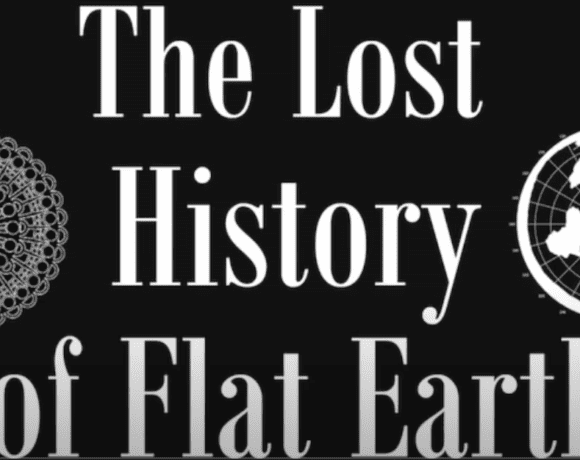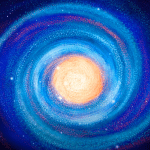Introduction
For millennia, humans believed in a flat Earth, and even today, some people still hold onto this belief. To understand the history, manifestations, and reasons behind the persistence of this idea, let’s embark on a journey through the ancient flat Earth cosmology, its presence in religious beliefs, and the modern flat Earth movement. We also highly recommend watching the accompanying video for a visual representation of the topic.
The Ancient Flat Earth Cosmology
From the earliest days of human history, cultures worldwide shared a conviction that the Earth was flat. Although there were minor variations in each culture’s cosmology and cosmogony, the overall understanding of Earth’s geography and astronomy was remarkably consistent. The ancient flat Earth model posited a stationary plane, devoid of motion or curvature, apart from the natural undulations formed by hills, mountains, and valleys.
The North Pole and the Stars
At the heart of this ancient cosmology was the North Pole, believed to be the magnetic center of the flat Earth, situated directly beneath the North Pole star, Polaris. Polaris was the only motionless star in the heavens, with all other constellations revolving around the Earth each night in perfect circles.
The Fixed and Wandering Stars
In this ancient understanding, stars were divided into two categories: fixed stars and wandering stars. Fixed stars remained constant in their constellation patterns, never altering their relative positions. Wandering stars, now known as planets, meandered across the sky, tracing intricate spirograph-like patterns of forward and retrograde motion during their cycles.
Flat Earth and Religious Beliefs
In many ancient cultures, cosmology was inextricably linked to religious beliefs. The flat Earth was considered a divine manifestation, with the Earth at the center of the cosmos and all heavenly bodies revolving around it. This belief was prevalent in ancient Egypt, Mesopotamia, India, and other civilizations.
The Spherical Earth Emerges
The idea of a spherical Earth gained traction in the 6th century BC, with the ancient Greeks at the forefront of this concept. However, the majority of people around the world continued to hold onto the flat Earth belief for centuries.
Flat Earth in the Middle Ages
During the Middle Ages, European scholars were divided on the shape of the Earth. Many still believed in a flat Earth, while others adhered to the spherical Earth concept. The widespread acceptance of the spherical Earth did not occur until the Renaissance when luminaries like Copernicus, Galileo, and Kepler developed the heliocentric model of the solar system.
The Modern Flat Earth Movement
Despite a wealth of scientific evidence supporting a spherical Earth, the modern flat Earth movement persists. Emerging in the mid-19th century, this movement argues that the scientific proof for a spherical Earth is part of a vast conspiracy to conceal the Earth’s true nature.
The Flat Earth Today
Flat Earthers today use various arguments to support their belief, such as questioning the validity of space agency images and pointing out perceived inconsistencies in the spherical Earth model. Social media has played a significant role in the resurgence of the flat Earth movement, providing a platform for sharing information, hosting discussions, and connecting like-minded individuals.
Prominent Flat Earth Proponents
In recent years, several high-profile individuals have publicly endorsed the flat Earth theory, including celebrities, athletes, and musicians. Their support has further fueled the movement, drawing attention to the idea and encouraging others to question the conventional understanding of Earth’s shape.
Online Communities and Conferences
The internet has facilitated the formation of numerous online communities dedicated to discussing and promoting flat Earth ideas. These communities engage in debates, share resources, and organize events like conferences and meetups to foster camaraderie and exchange ideas. The Flat Earth International Conference, for example, is an annual event that attracts speakers and attendees from around the world.
Flat Earth Experiments
Modern flat Earth proponents often conduct experiments to validate their claims, using tools like spirit levels, laser rangefinders, and cameras with high-powered zoom lenses. While these experiments are typically dismissed by mainstream scientists, they remain a crucial part of the fFlatEarth community’s efforts to substantiate their beliefs.
Criticisms and Debunking Efforts
Skeptics and scientists have consistently debunked flat Earth claims using evidence from various fields, such as astronomy, geology, and physics. Experiments, observations, and mathematical proofs have all been used to demonstrate the Earth’s spherical shape. Nevertheless, flat Earth believers often dismiss these counterarguments as part of the alleged conspiracy to hide the truth.
Psychological and Sociological Factors
The persistence of the flat Earth belief in modern times can be attributed to various psychological and sociological factors. Some researchers suggest that the appeal of the flat Earth theory lies in its simplicity and the sense of control it offers in a complex world. Additionally, the fFlatEarth movement provides a sense of belonging and community for its adherents, which may contribute to its continued existence.
In Conclusion
The flat Earth belief has been a part of human history for millennia, and despite overwhelming scientific evidence to the contrary, it continues to persist. From its ancient origins to its resurgence in the modern era, the flat Earth movement remains a fascinating topic worth exploring. To gain a deeper understanding of the history, motivations, and ideas behind this movement, we encourage you to watch the accompanying video.



















